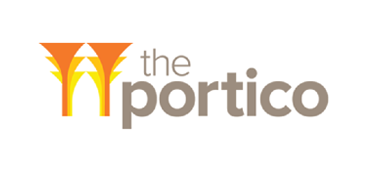A Brief History of The Portico
[et_pb_section bb_built=”1″][et_pb_row][et_pb_column type=”2_3″][et_pb_text _builder_version=”3.1.1″]
Tampa’s first church congregation built the “Little White Church” at what is today the corner of Kennedy and Morgan in the mid-1850’s.
As Tampa grew, the Methodist congregation, having outgrown the little church, built a much larger brick sanctuary at Florida Avenue and Tyler Street, celebrating its opening in 1891. This building was home to the First Methodist Church (FMC) as Tampa grew from a town of 5,000 to a city of 124,000 after World War II.
[/et_pb_text][/et_pb_column][et_pb_column type=”1_3″][et_pb_image _builder_version=”3.1.1″ src=”https://theportico.org/wp-content/uploads/2019/06/The-Portico-History-1.jpg” /][/et_pb_column][/et_pb_row][et_pb_row][et_pb_column type=”1_3″][et_pb_image _builder_version=”3.1.1″ src=”https://theportico.org/wp-content/uploads/2019/06/The-Portico-History-2.jpg” /][/et_pb_column][et_pb_column type=”2_3″][et_pb_text _builder_version=”3.1.1″]
In 1948, First Methodist broke ground on the Peace Memorial Educational Building and the Tom Henderson Memorial Chapel. The Chapel was named in honor of Tom N. Henderson, Sr. Both structures were dedicated in 1952. First United’s membership reached 1,950, more than double that of ten years prior.
[/et_pb_text][/et_pb_column][/et_pb_row][et_pb_row _builder_version=”3.1.1″][et_pb_column type=”4_4″][et_pb_text _builder_version=”3.1.1″]
In 1955, First Methodist launched a new building campaign for a new youth and fellowship building, plus the beginning of a ‘new sanctuary fund.’ Membership peaked at 2,092 in 1957. Branscomb Memorial Building, constructed on the site of the former parsonage north of the Education Building, was consecrated in 1959, and remains standing today.
[/et_pb_text][/et_pb_column][/et_pb_row][et_pb_row][et_pb_column type=”2_3″][et_pb_text _builder_version=”3.1.1″]
A 1965 report by Rev. Huston to the Board in advised, “We must make an appraisal of our present situation and set a course for the future that will best allow FC (First Church) to turn the trend of a shrinking congregation, to recover its former place of prominence in Tampa, and rediscover its ministry to the city through its location in the business and commercial area of the city.” This statement marks the decline in the size of the congregation from its highest levels only eight years prior, and the beginning of the end of FMC as a congregation. Meanwhile, suburban growth impacted downtown Tampa, and its businesses formerly supporting a larger population deteriorated. Many industries began to move to outlying areas.
[/et_pb_text][/et_pb_column][et_pb_column type=”1_3″][et_pb_image _builder_version=”3.1.1″ src=”https://theportico.org/wp-content/uploads/2019/06/The-Portico-History-3.jpg” /][/et_pb_column][/et_pb_row][et_pb_row][et_pb_column type=”1_3″][et_pb_image _builder_version=”3.1.1″ src=”https://theportico.org/wp-content/uploads/2019/06/The-Portico-History-4.jpg” /][/et_pb_column][et_pb_column type=”2_3″][et_pb_text _builder_version=”3.1.1″]
The April 23, 1966 Tampa Tribune and Times reported that FMC was building a new sanctuary to replace the present one. “This will be the third house of worship of Tampa’s oldest congregation which dates back to 1846.” The new sanctuary’s architecture was described as “contemporary Gothic, Gothic in heritage yet using contemporary materials.” This project also included the construction of an administration building just to the east of the new sanctuary and a ‘portico’ to connect the entrances of both buildings.
[/et_pb_text][/et_pb_column][/et_pb_row][et_pb_row _builder_version=”3.1.1″][et_pb_column type=”4_4″][et_pb_text _builder_version=”3.1.1″]
The Portico was envisioned as a “collecting place” for people approaching either building. Membership was down to 471 persons.
The Education Building, located between the Chapel and Branscomb Hall, was destroyed by fire in 1987. The Chapel sustained minor water damage and loss of one stained glass window. Branscomb Hall had smoke and water damage, but was saved by a firewall. FMC removed the destroyed building in 1988, which provides the parking area that exists today between Branscomb Hall and the Chapel.
[/et_pb_text][/et_pb_column][/et_pb_row][et_pb_row][et_pb_column type=”2_3″][et_pb_text _builder_version=”3.1.1″]
As the church celebrated its 150th anniversary in 1995, the Nurture and Evangelism Committee reported recommendations from the Conference Council on Ministries staff: “The basic challenge with which we are faced is whether we as a congregation can commit ourselves to change to a ministry with a significantly greater emphasis on mission, or whether we are just going to settle for some cosmetic changes in the way we present our current style of ministry.”
[/et_pb_text][/et_pb_column][et_pb_column type=”1_3″][et_pb_image _builder_version=”3.1.1″ src=”https://theportico.org/wp-content/uploads/2019/06/The-Portico-History-5.jpg” /][/et_pb_column][/et_pb_row][et_pb_row _builder_version=”3.1.1″][et_pb_column type=”4_4″][et_pb_text _builder_version=”3.1.1″]
In 2003, foreshadowing the future, the Hyde Park United Methodist Church community “prayed for and envisioned that their church would ‘cross the river’ and Make God’s Love Real to the growing downtown community of residents and workers.”
The June 18, 2011 Tampa Bay Times reported that “delegates of the Florida Conference of the United Methodist Church voted to close the Florida Avenue church. Conference officials blame low attendance, a drop in annual giving and declining outreach. They say they haven’t decided what they plan to do with the property other than find a way to keep a ministry presence in downtown Tampa.”
[/et_pb_text][/et_pb_column][/et_pb_row][et_pb_row][et_pb_column type=”1_3″][et_pb_image _builder_version=”3.1.1″ src=”https://theportico.org/wp-content/uploads/2019/06/The-Portico-History-6.jpg” /][/et_pb_column][et_pb_column type=”2_3″][et_pb_text _builder_version=”3.1.1″]
Approximately six years after the closing of FUMC, regularly scheduled worship services resumed on Sunday evenings, first in what was formerly called the “administration building” and later in the newly renovated Community Hall (the former sanctuary). The goal of the previous congregation for its Portico to be a gathering place and to have a mission of service to the downtown community, remains at the heart of today’s Portico Campus of Hyde Park United Methodist Church. The vision of the former church’s leadership, which began to emerge in the 1960’s, is very much alive today.
[/et_pb_text][/et_pb_column][/et_pb_row][et_pb_row _builder_version=”3.1.1″][et_pb_column type=”4_4″][et_pb_text _builder_version=”3.1.1″]
Thanks to Russ Adkins for producing and sharing this information.
[/et_pb_text][/et_pb_column][/et_pb_row][/et_pb_section]
